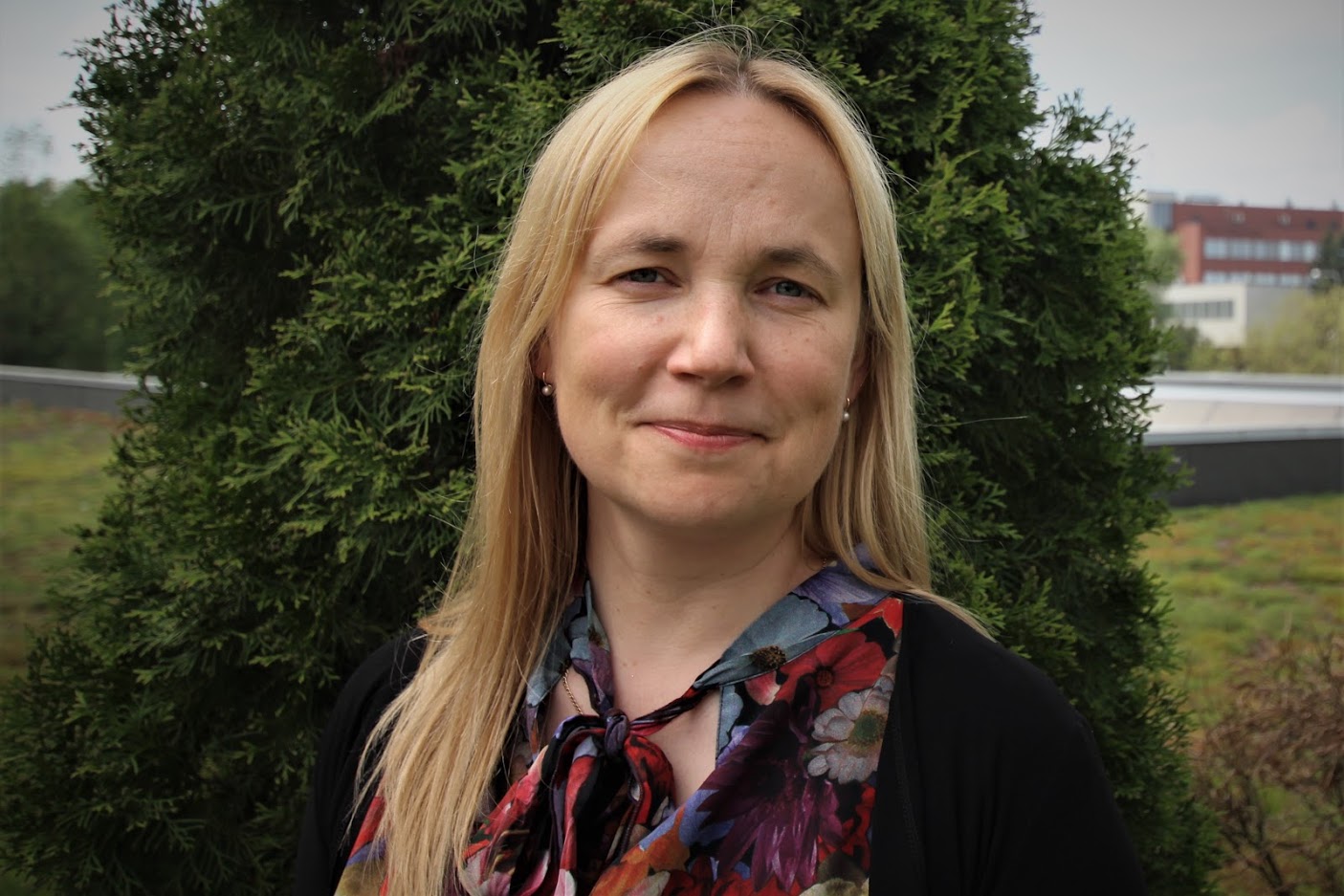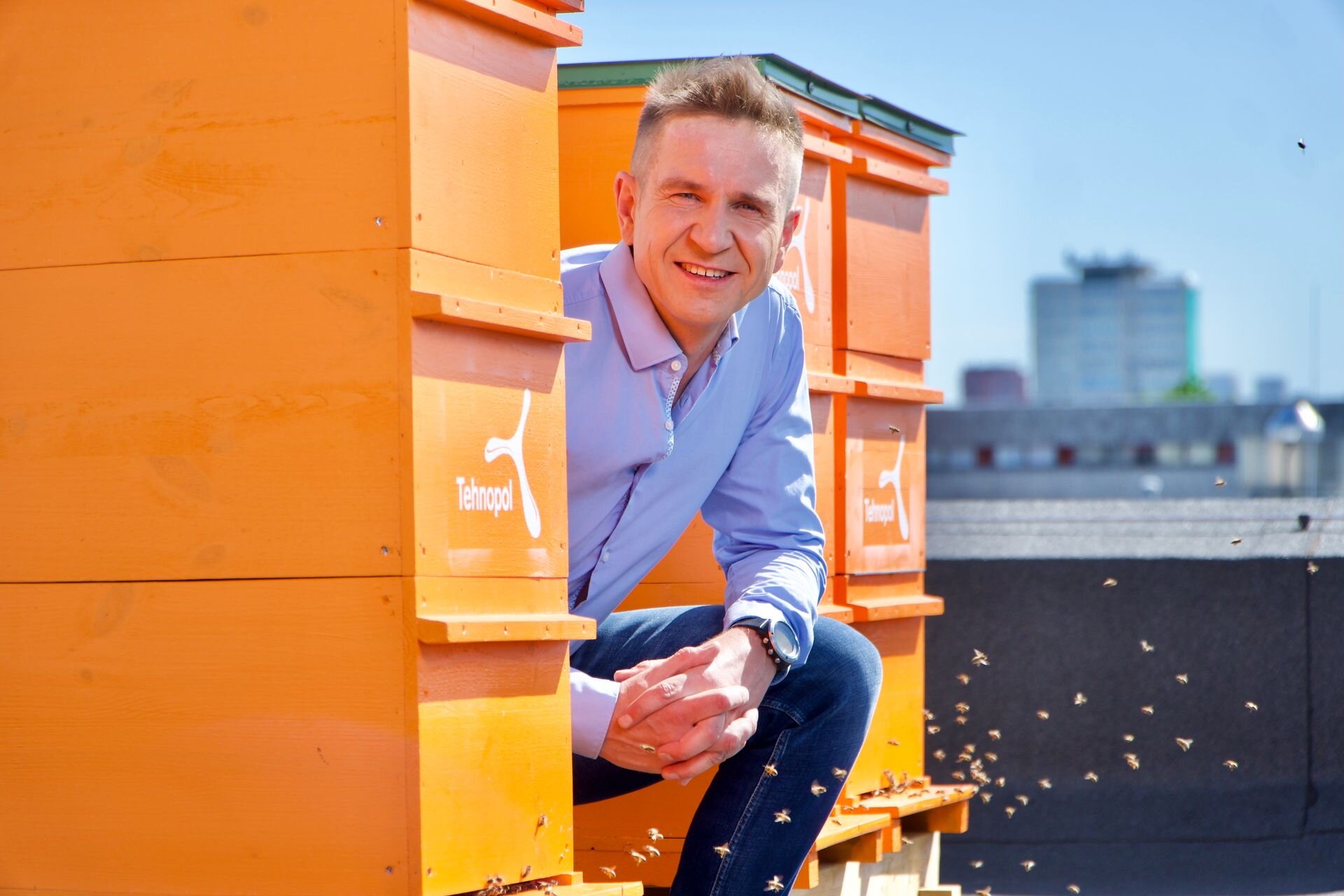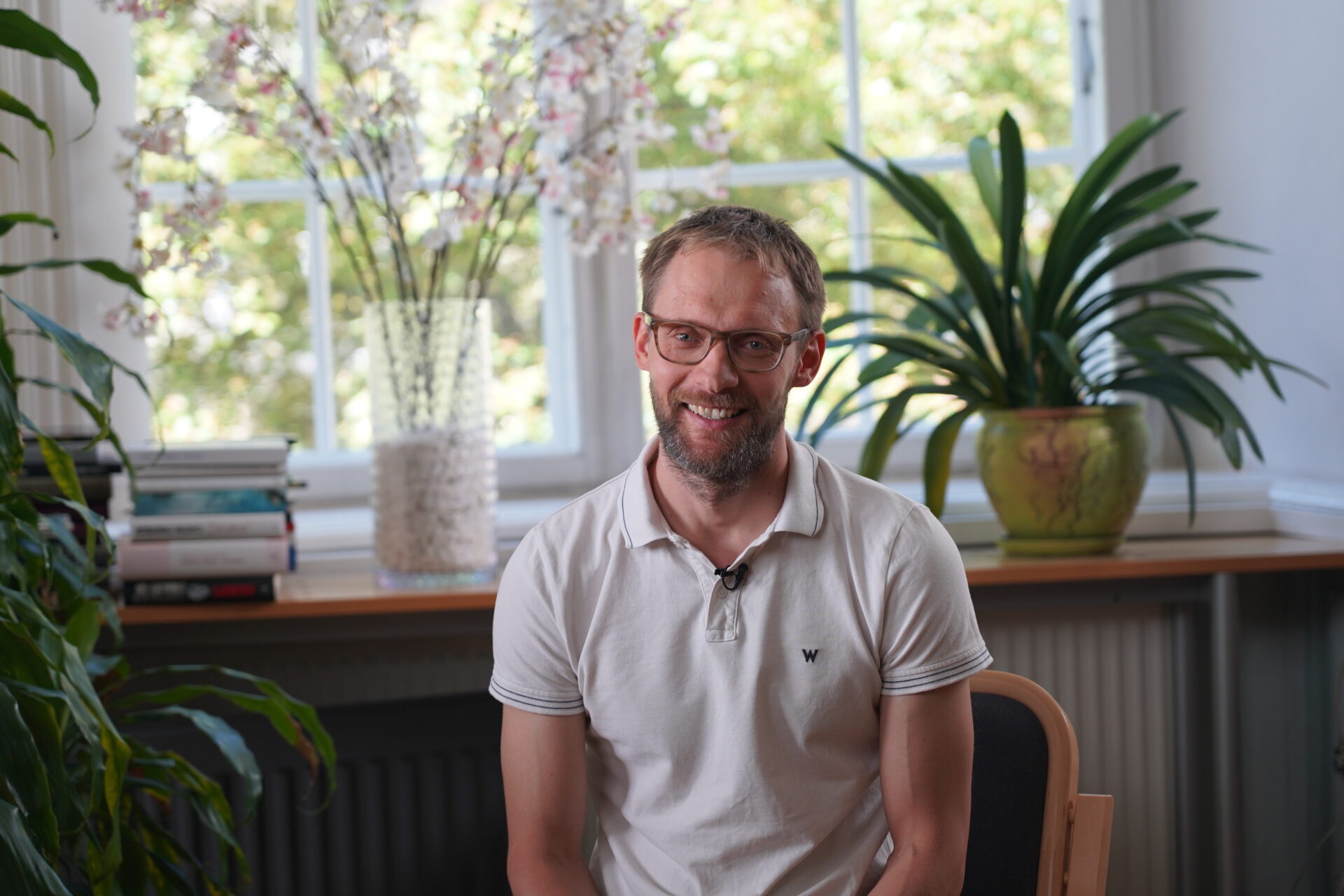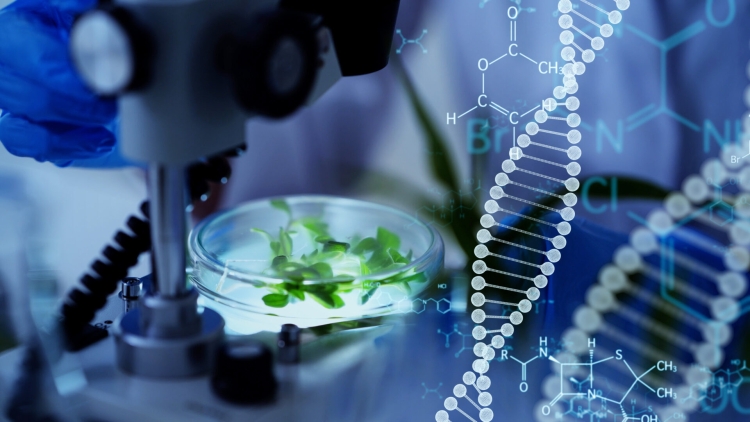The Bioeconomy Centre of the Estonian University of Life Science is one of the leading institutions of its kind and makes a remarkable contribution to the promotion of the bioeconomy.
The bioeconomy is a large and multifaceted field and will play an important role in the future. Tell us what it means in Estonia and in the Baltic region generally.
Ragmar Saksing (RS): It’s a broad-ranging term which takes in all economic activities and economic models that are based on biological resources and ecosystems. Attempts are being made with the help of the bioeconomy to integrate biological diversity, sparing using of resources, renewable energy and ecological and social aspects into the economy.
Katrin Kepp (KK): The sustainable use and circulation of resources has an important place in the bioeconomy as well, which has led to the use of the more specific term the ‘circular bioeconomy’.
The bioeconomy isn’t a separate branch of the economy, but takes in almost all industrial and economic sectors. Bioeconomy activities in Estonia are primarily aimed at boosting people’s well-being, preserving or improving the natural environment, and guaranteeing both food and energy security.
RS: The circular bioeconomy plays an important role in developing a sustainable and resource-efficient economy. There are a number of areas and specific activities in our region that are linked to the circular bioeconomy which enable the efficient use of biological resources and the creation of sustainable business opportunities.
KK: In the Baltic States the circular bioeconomy can be viewed as a single thing, but the priorities vary slightly from region to region. Examples range from the timber industry, agriculture and food production to the production of biogas and biomethane, the re-use of waste and the circular economy as a whole.
In the Vidzeme region in Latvia, for example, the emphasis is on food and digitalisation, while in Lithuania it’s on biotech. The biggest success stories in Estonia so far have been in biotech and valorising timber.
RS: In developing the bioeconomy the aim is to create greater added value from biological resources and to find better opportunities for the improved use of raw materials. As such, in developing the bioeconomy Estonia has great potential to contribute more to sustainable economic development, too.

Katrin Kepp
What makes the bioeconomy an important economic segment for Estonia and the Baltic region?
RS: Well, look at the natural resources we have – forests, farmland, fresh water and biological diversity. The circular bioeconomy enables us to make more sustainable and efficient use of them and creates economic value in the process whilst preserving and respecting the ecosystems around us.
KK: The Estonian timber industry is rather traditional in bioeconomic terms, focussing mainly on the mechanical processing of wood and its use for energy production. That said, the valorisation of by-products and waste from the industry does take place in the sector, which is a key principle of a sustainable circular bioeconomy.
Is there anything else we have besides natural resources that we can talk about in the context of the bioeconomy?
KK: We can certainly talk about the need for a sparing economy, whose principles the circular bioeconomy supports, with resources being used efficiently, waste being reduced and environmental and social impact being taken into account. It’s important for Estonia and the Baltic States to move towards a green economy, and the circular bioeconomy will help in achieving that.
The bioeconomy in fact makes it easier to adopt the principles of the circular economy, because it facilitates less waste and the greater circulation of resources, bringing economic benefits as it does so. The life-cycle of products is extended through the circular economy, creating added value. The repeated use and circulation of products contributes to the sparing use of natural resources and the preservation of landscapes and habitats.
RS: We can also talk about innovation and the new business opportunities that the circular bioeconomy offers. For example, the field of biotech enables the development of new medicines, biodegradable materials, biofuels and the like. Offering consumers innovative and longer-lasting products improves quality of life over time, saves money and is good for the environment.
KK: The circular bioeconomy also allows for the creation of new products and services in line with sustainability principles, which is to say meeting the needs of consumers while taking the environment around them into account.
RS: Another important thing in the circular economy is that the circular bioeconomy creates new jobs and supports regional development. That drives economic growth and increases the competitiveness of regional areas as well. The forestry and agricultural sectors and their offshoots bring a lot of new work opportunities into such areas.

Ragmar Saksing
The focal points and main issues in the development of the bioeconomy in Estonia and the Baltic States seem to be pretty much in place, but are there any bottlenecks we should be turning our attention to?
RS: Yes, the focal points are the sustainable use of resources, the circular bioeconomy, technological innovation, cooperation and networks, investments, environmental aspects, employment and training.
KK: But the biggest bottleneck remains the limited awareness of the circular bioeconomy among consumers and in society.
So how can we boost that awareness?
KK: A variety of initiatives and cross-sector projects designed to inform people of things are helping with that. Deep-tech developments in cooperation with companies and universities are as well.
Paired with positive, successful examples from the circular bioeconomy, they’re already raising the public’s awareness of the issue. More and more people are cognisant of the fact that stuff that’s ordinarily thrown away attains value and indeed a price tag in the value chain.
The education system plays an important role here, too. Study modules have been put together, as have further training opportunities – in the form of micro-degrees – for both schools and adult learners.
For instance, the Estonian University of Life Sciences is launching Bachelor’s studies in a new circular bioeconomy programme in spring 2024. There’s an enormous need for specialists in this area.
A lot has been done, but there’s still a long and very exciting way to go. Estonia has a great opportunity here to forge ahead.
Tell us a little bit about the BioBaltic project the university was involved in. It established a platform to raise awareness of bioeconomy models through mutual learning and the creation of networks in the Nordic countries and Baltic States, but how did you go about implementing change in the project, and how did you unite experts and get them working together?
KK: The aim was to include interest groups in Estonia who were actively involved in the bioeconomy and to raise awareness of the bioeconomy in society. To reach out to the interest groups, all of the project partners – including our university, Tehnopol, Mektory and the Estonian office of the Nordic Council of Ministers (NCM) – mapped and approached companies and institutions actively involved in the circular bioeconomy.
A series of workshops were organised for them to talk about the ups and downs on their circular bioeconomy journeys. Quite a few partners from the Nordic countries were included in addition to those from Estonia, and they shared their experiences and advice. These weren’t typical seminars; more like conversations where everyone got to have their say on whatever issue or point of view they wanted to raise.
In autumn 2022 we organised an international bioeconomy conference in Tartu during which we showcased Estonian start-ups like Yook and Äio, as well as Germany’s Prolupin and Norway’s Seaweed Solution. Members of EU parliamentary committees were also invited to take part so they could take our message away with them.
As part of the project the BioBaltic team also contributed to the drafting of the Estonian bioeconomy roadmap under the aegis of the Ministry of Rural Affairs.
One of the things in the project that facilitated active involvement was the visits the project partners paid to the centres coordinating the bioeconomy in the Nordic countries to learn about best practice and make new contacts.
For instance, in spring 2023 we and the entire Estonian team visited Paper Province in Sweden, which focusses on activities in the timber sector. The companies and R&D institutes that took part in the trip made some really useful contacts they’ll be working with on new projects.
Within the project, each of the three Baltic States undertook an in-depth study of a key case involving the circular bioeconomy in their country. For Estonia that was the valorisation of red algae. The results were visualised in ArcGIS in cooperation with Nordregio. Among other things, the study found that there’s great potential for the use and valorisation of red algae.

Madis Tilga
The development of the bioeconomy is supported by the Nordic Council of Ministers
The study into the use and valorisation of red algae which was conducted by the Bioeconomy Centre of the Estonian University of Life Sciences and whose results were published in 2022 was funded via the ‘BioBaltic: Nordic-Baltic Cooperation on the Circular Bioeconomy’ project of the NCM. The research revealed that 80 species of macroalgae and larger water-growing plants are represented in Estonia’s maritime waters.
The algae under study, Furcellaria lumbricalis, is not the red algae most commonly found in the country’s coastal waters, but it is one of the best known and one which has found the most industrial use. We wrote about the study in greater detail in a story we published in June 2023 entitled “These simple things are the greatest treasures of Estonia’s bioeconomy!”
The NCM began systematically communicating the need for and nature of the bioeconomy around a decade ago when the European Union unveiled its first bioeconomy strategy in 2012.
NCM bioeconomy adviser Madis Tilga says awareness of the bioeconomy should already be at a level whereby, alongside clean energy, the bioeconomy provides the input for and forms the basis of all of our socioeconomic activities. “Whereas to begin with the focus was on sharing knowledge and making contacts, primarily between officials and researchers, lately we’ve been turning more of our attention to getting entrepreneurs involved,” he explained.
Tilga added that cooperation within the business sector is very important in getting new business models off the ground. However, this can often be difficult to achieve due to fear of competition. “Cooperation isn’t just about gaining ideas from others, but also saving on costs,” he said. “You don’t have to keep reinventing the wheel to find suitable partners for your value chain, joint investments in infrastructure and equipment and so on. Innovation tends to be found where input and approaches are multifaceted.”

